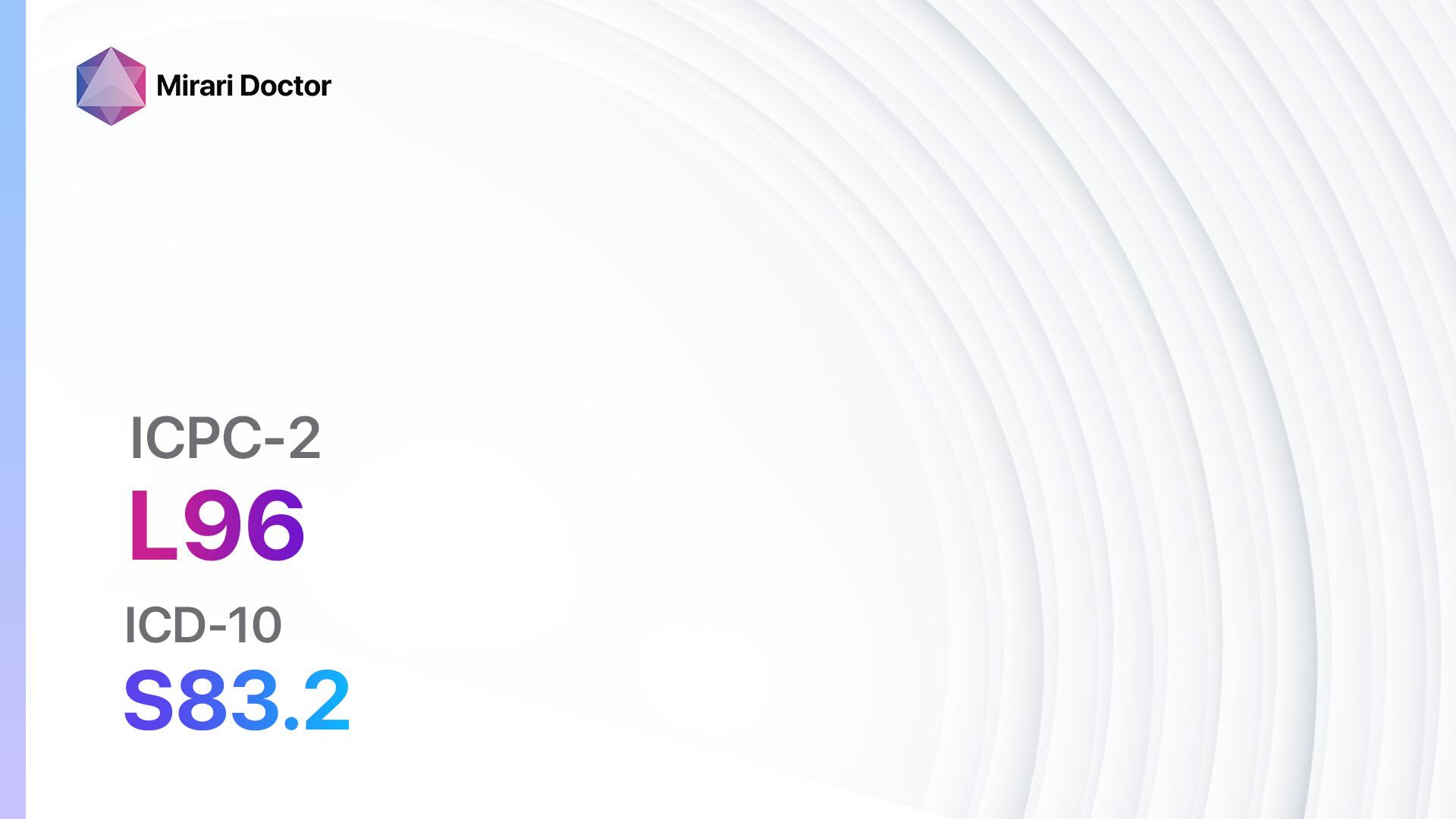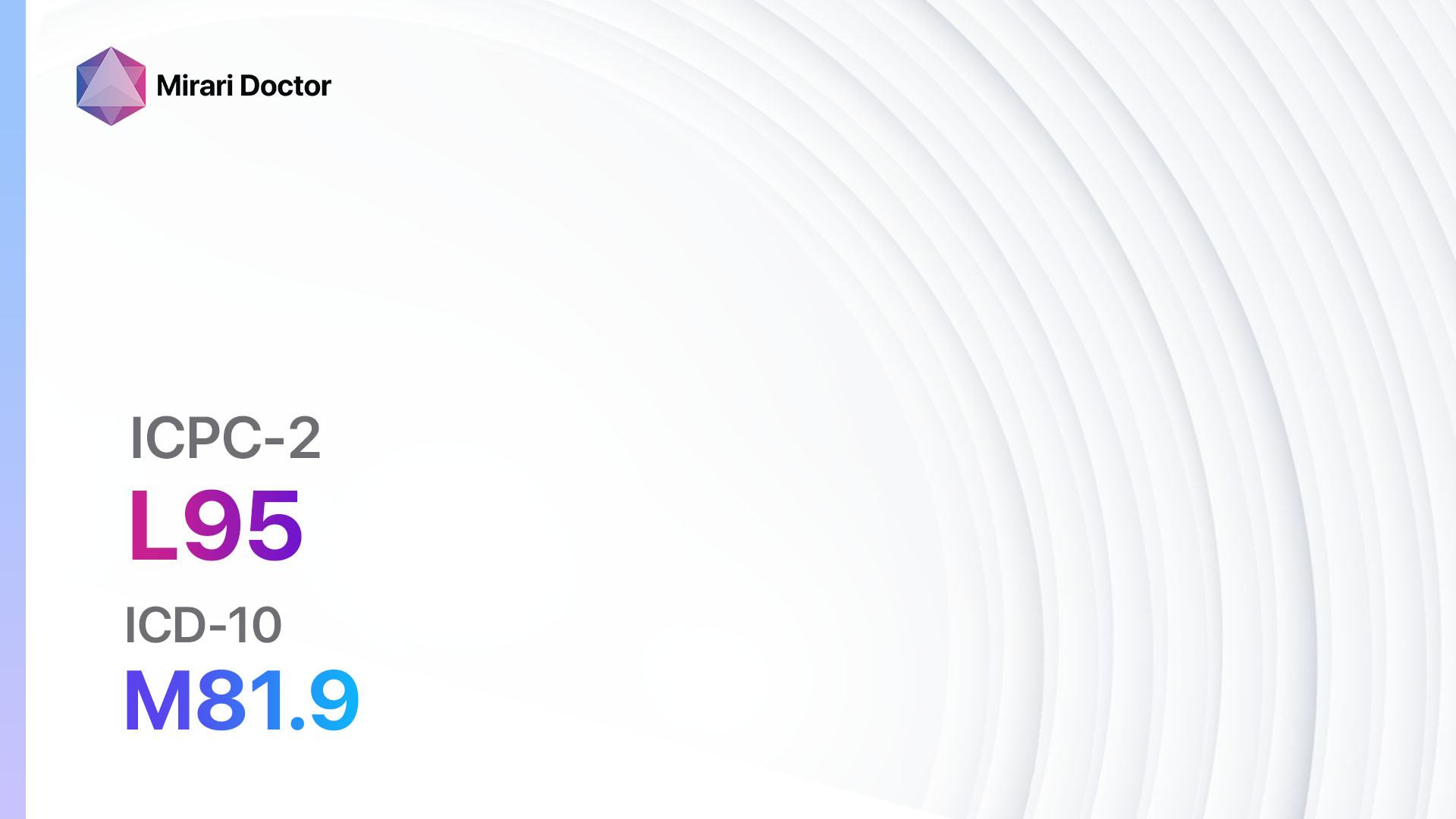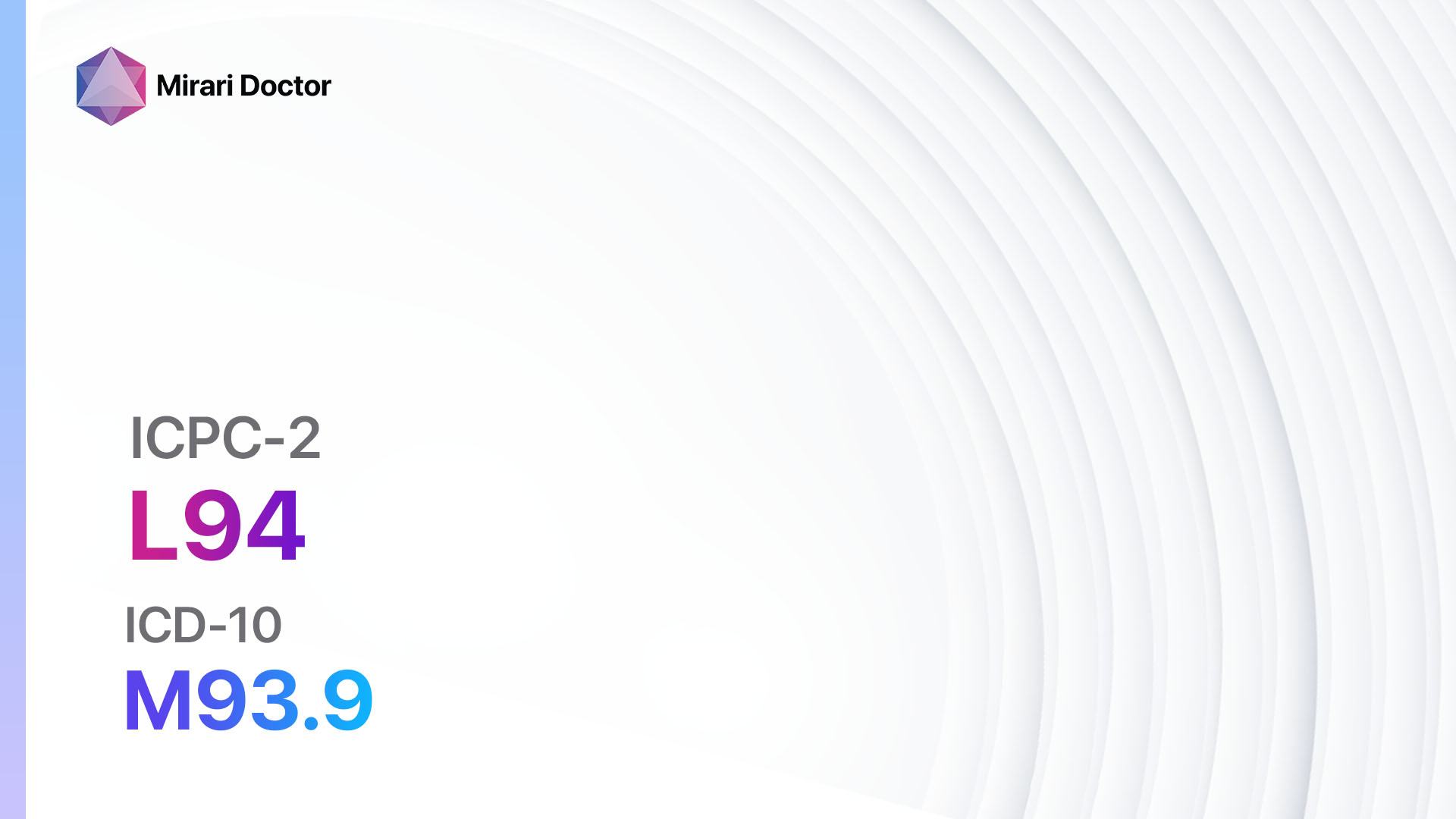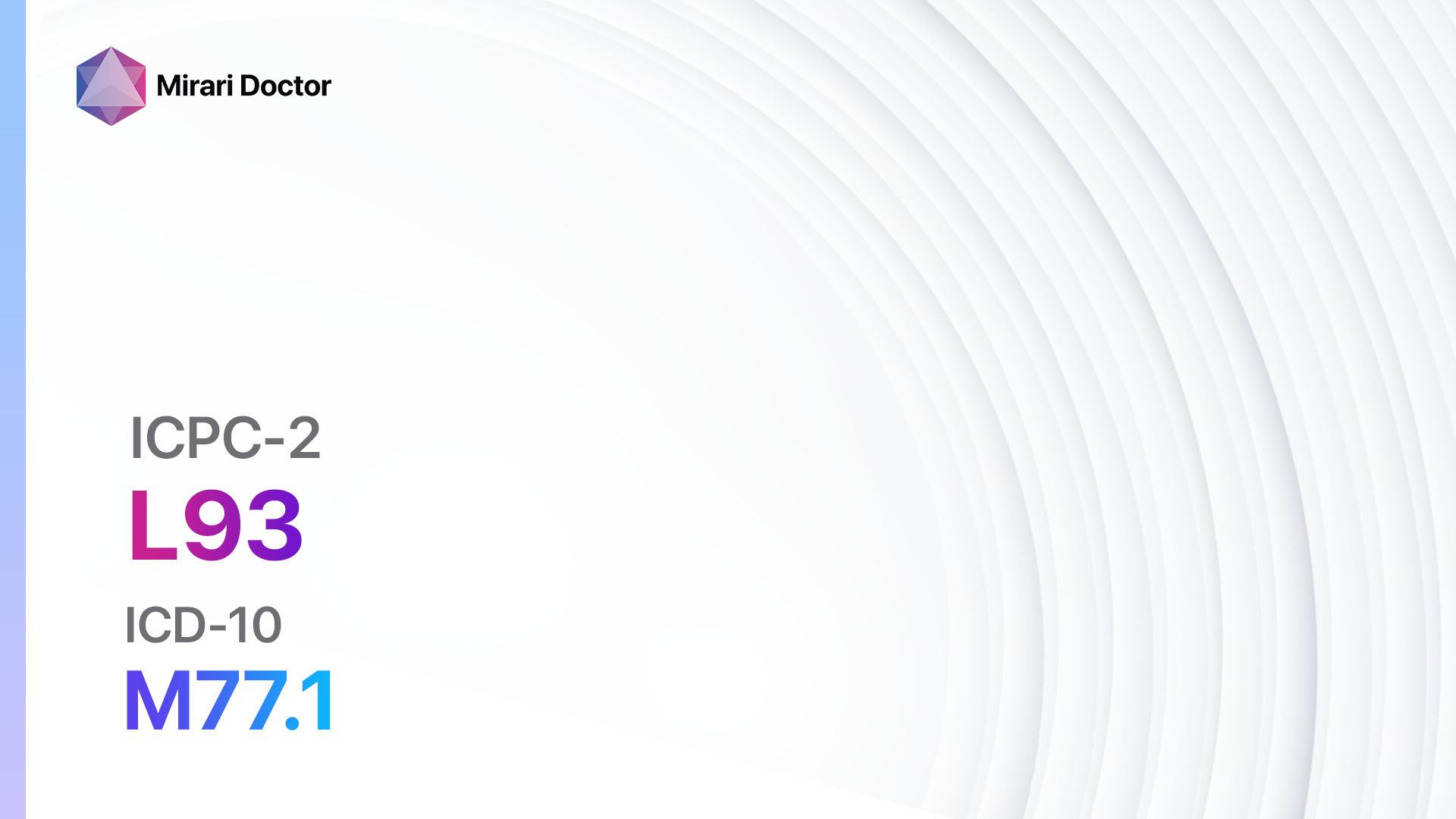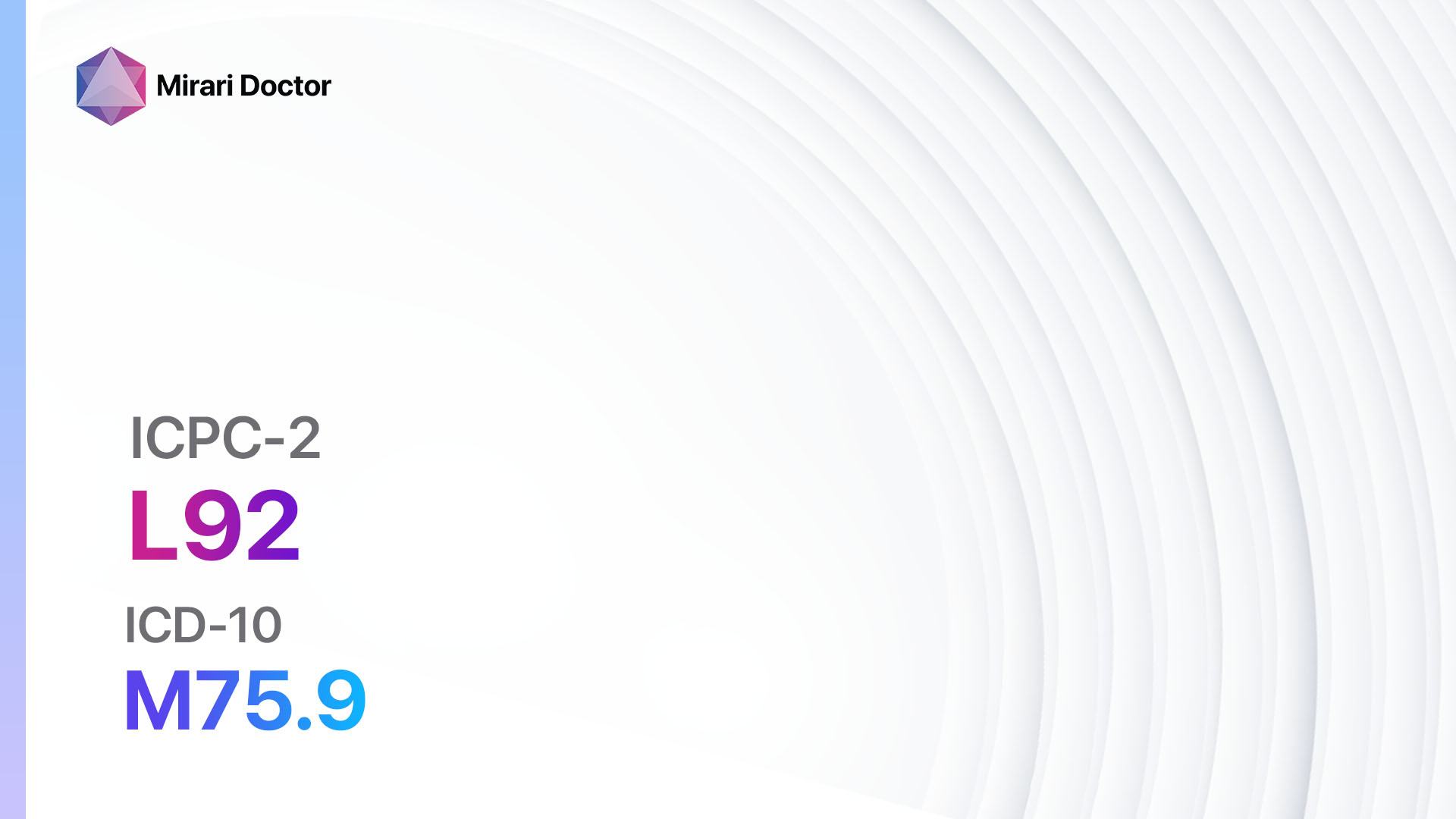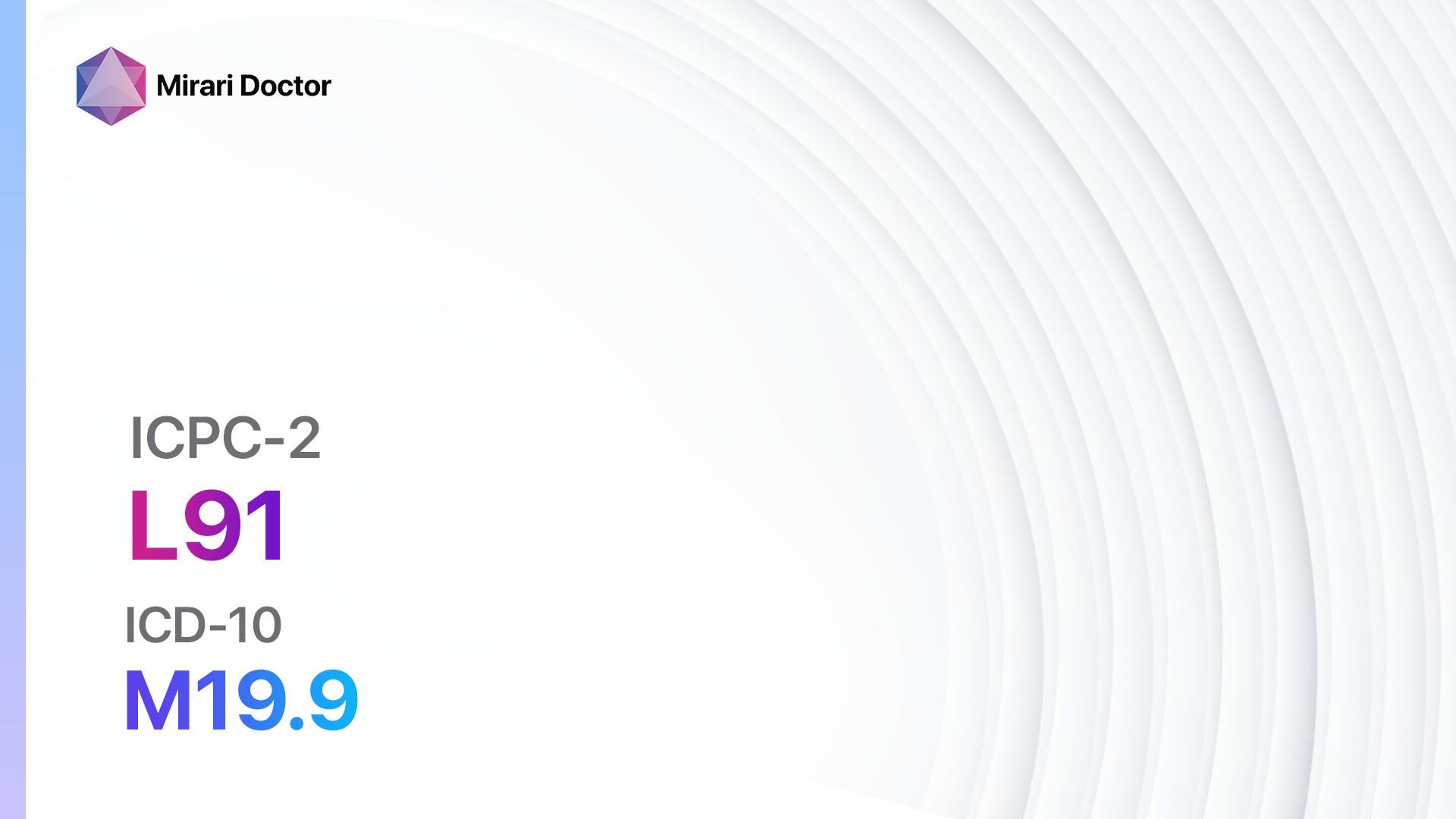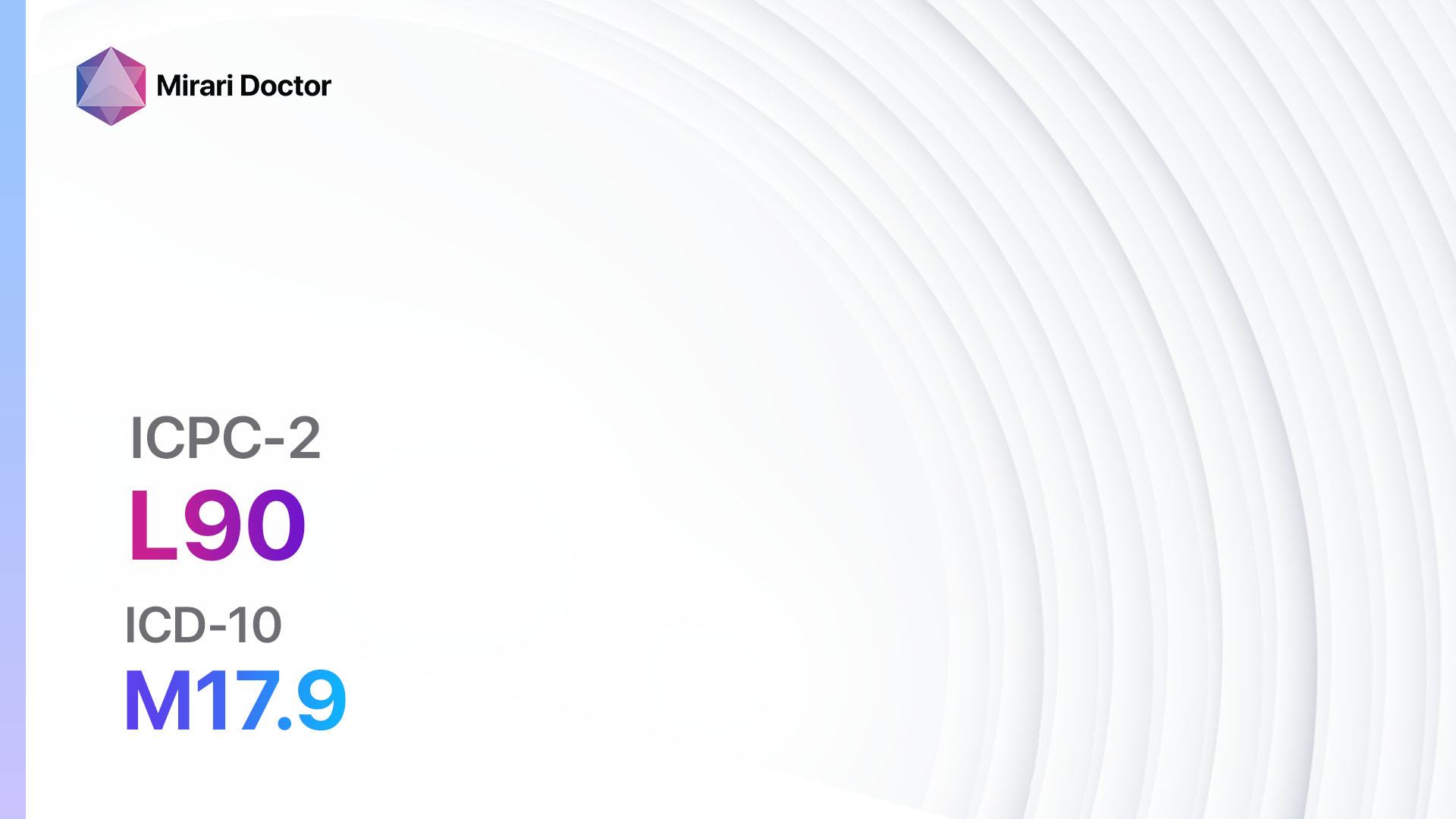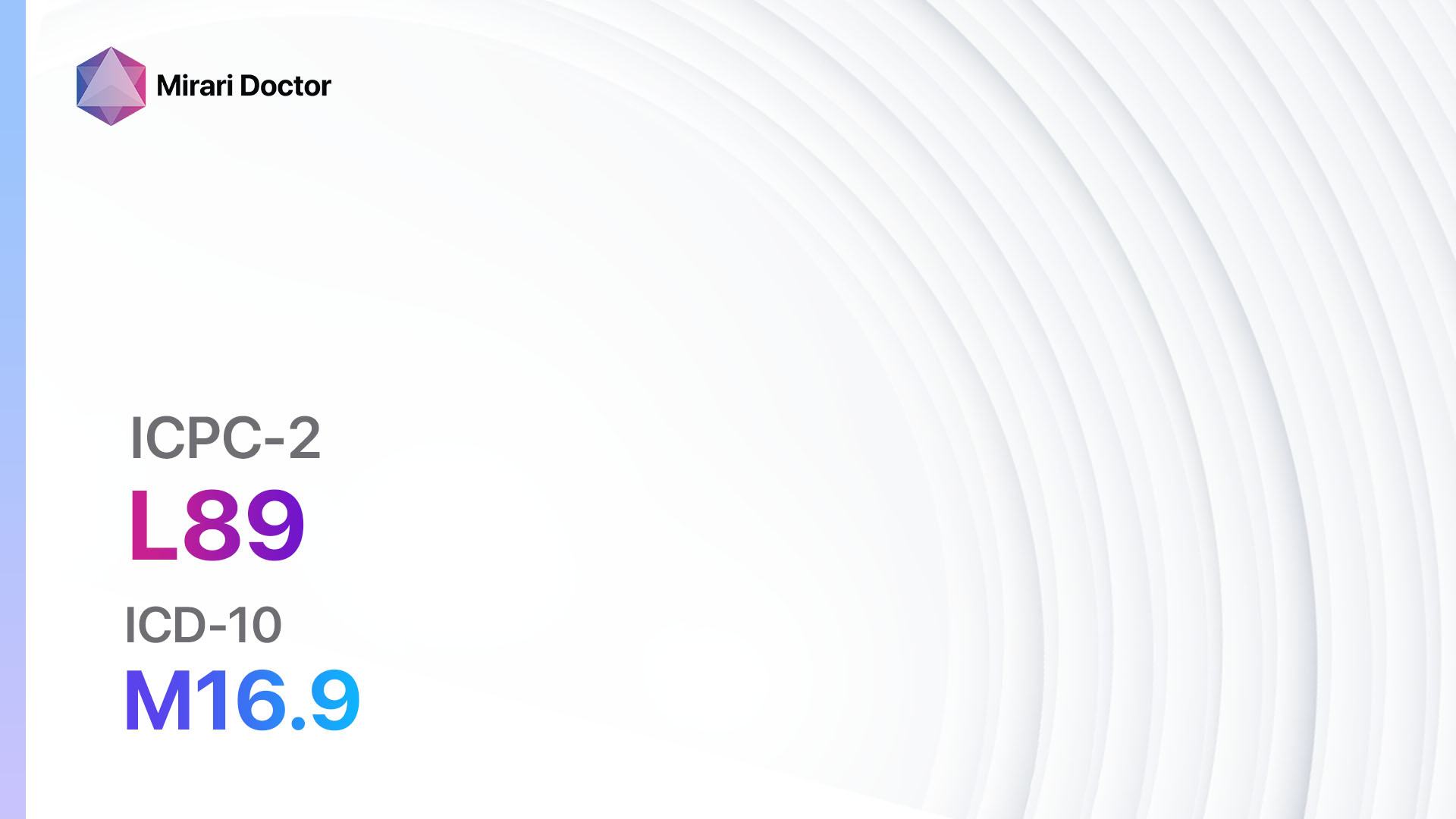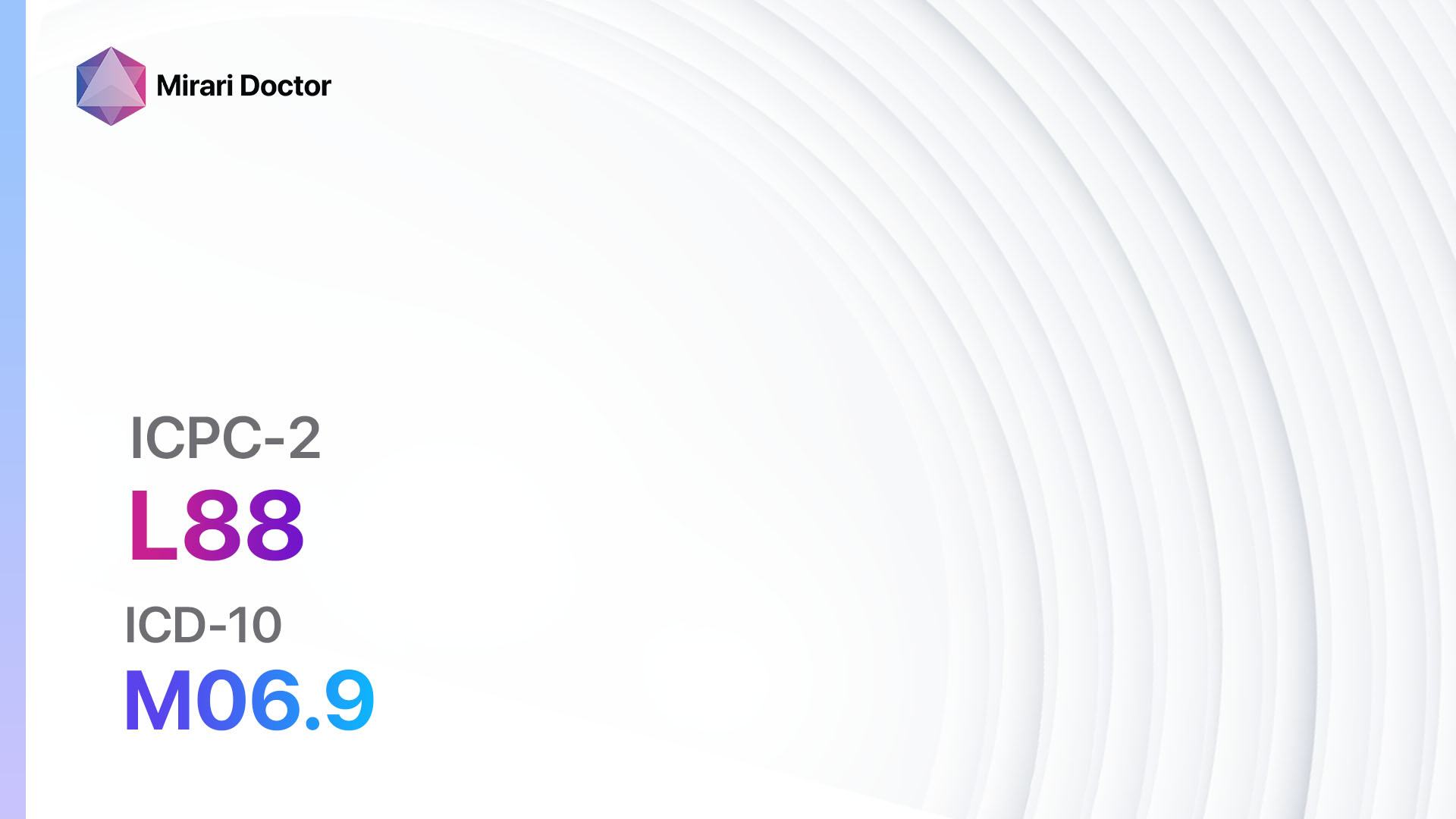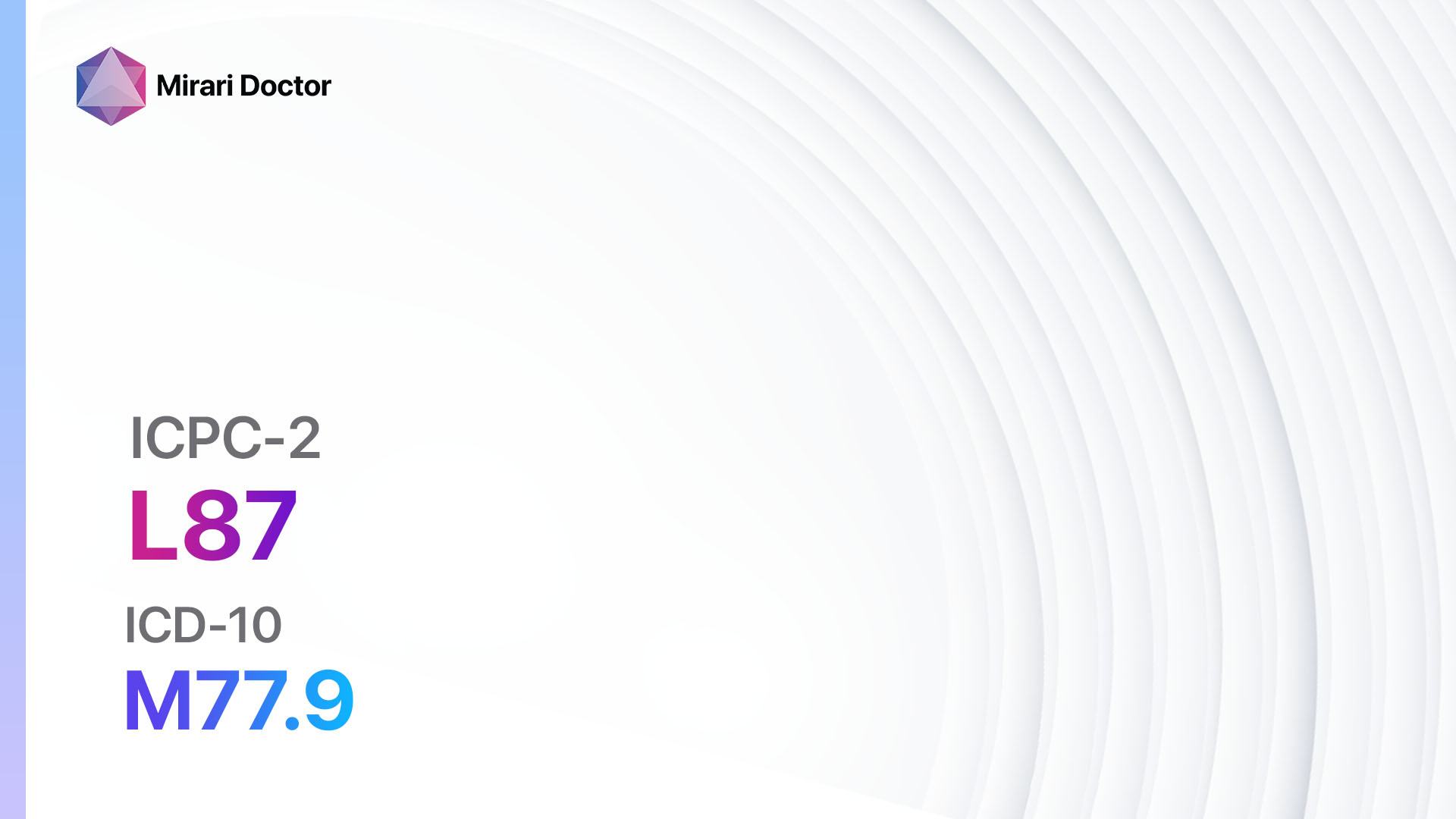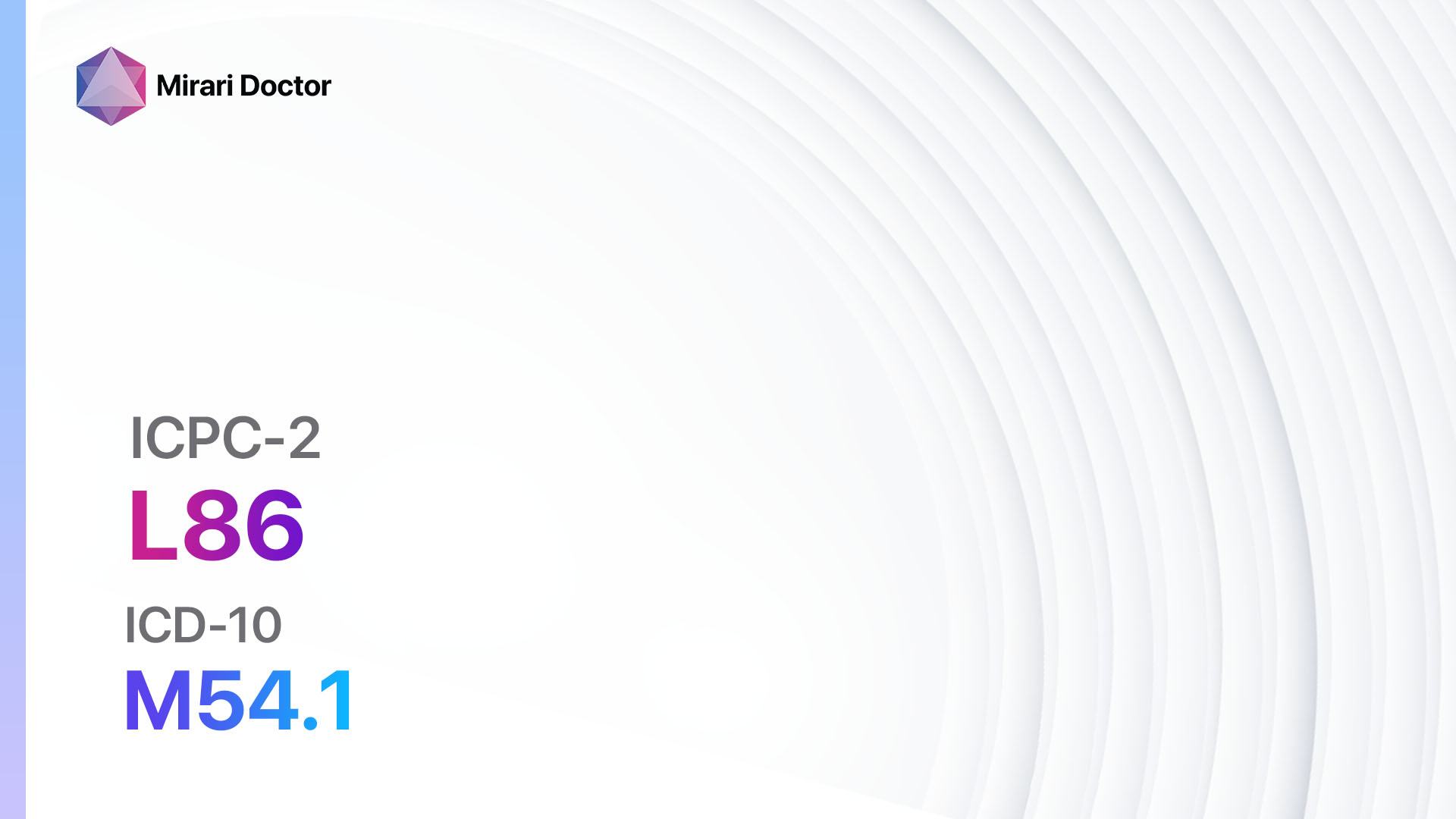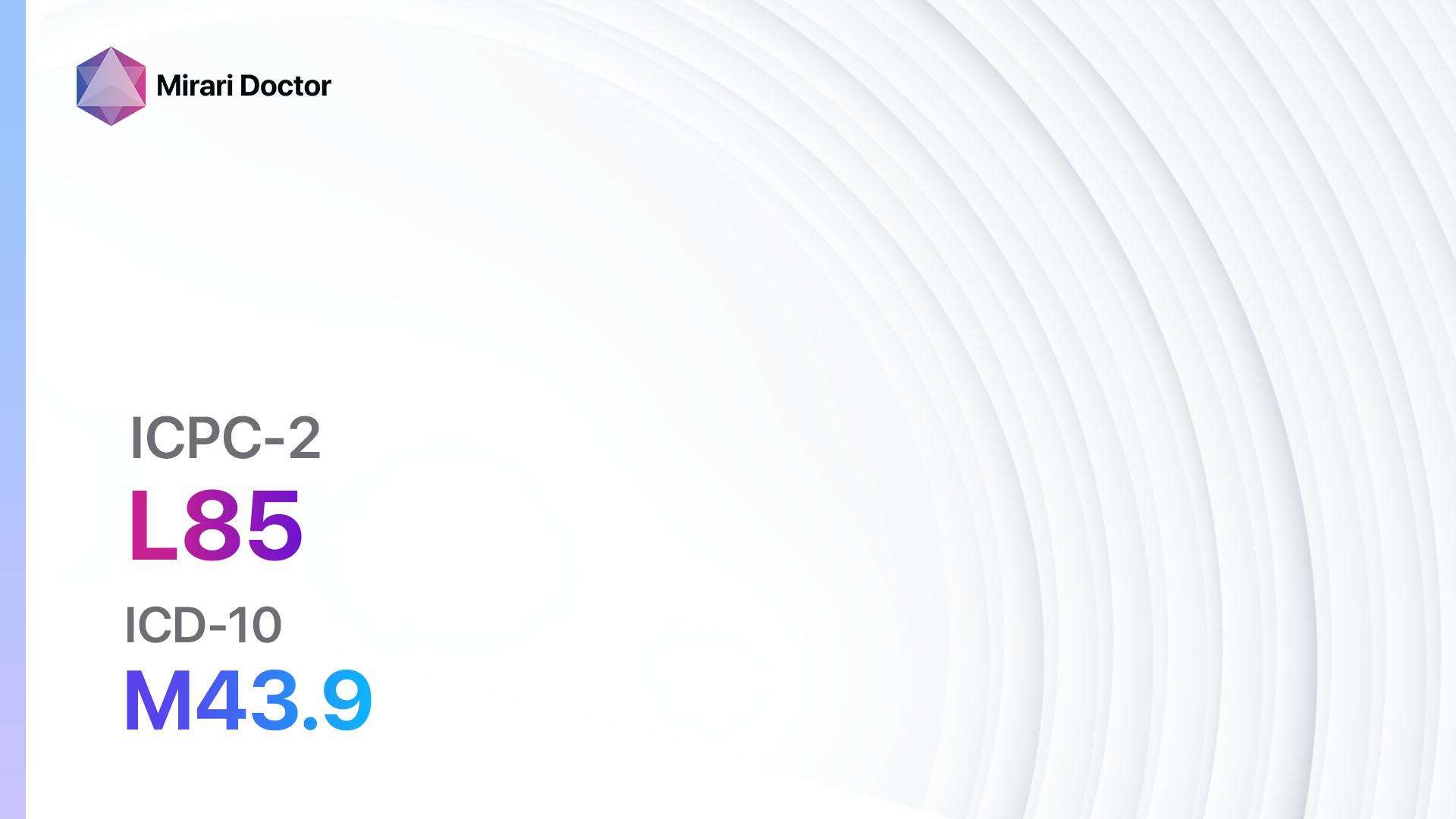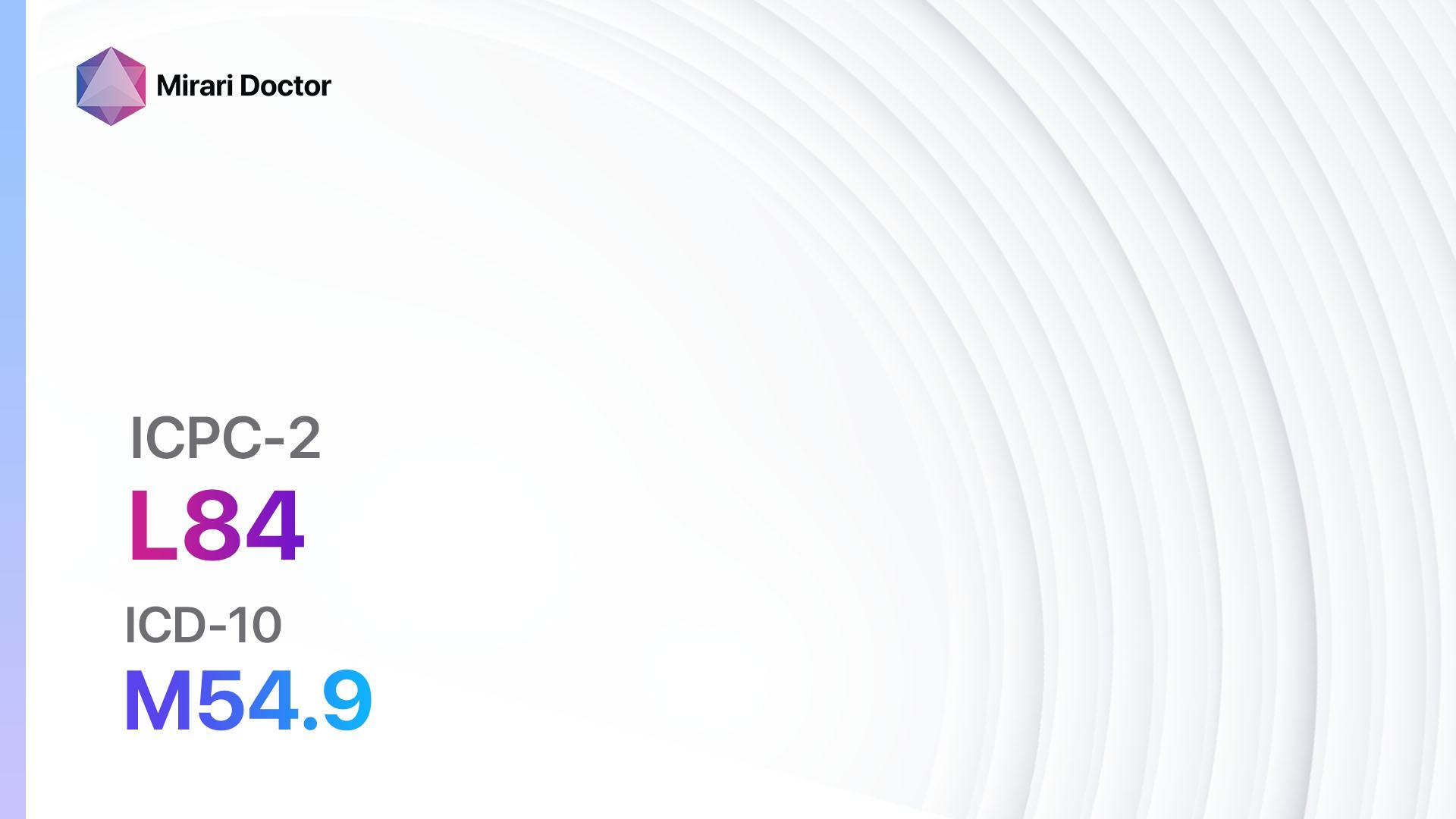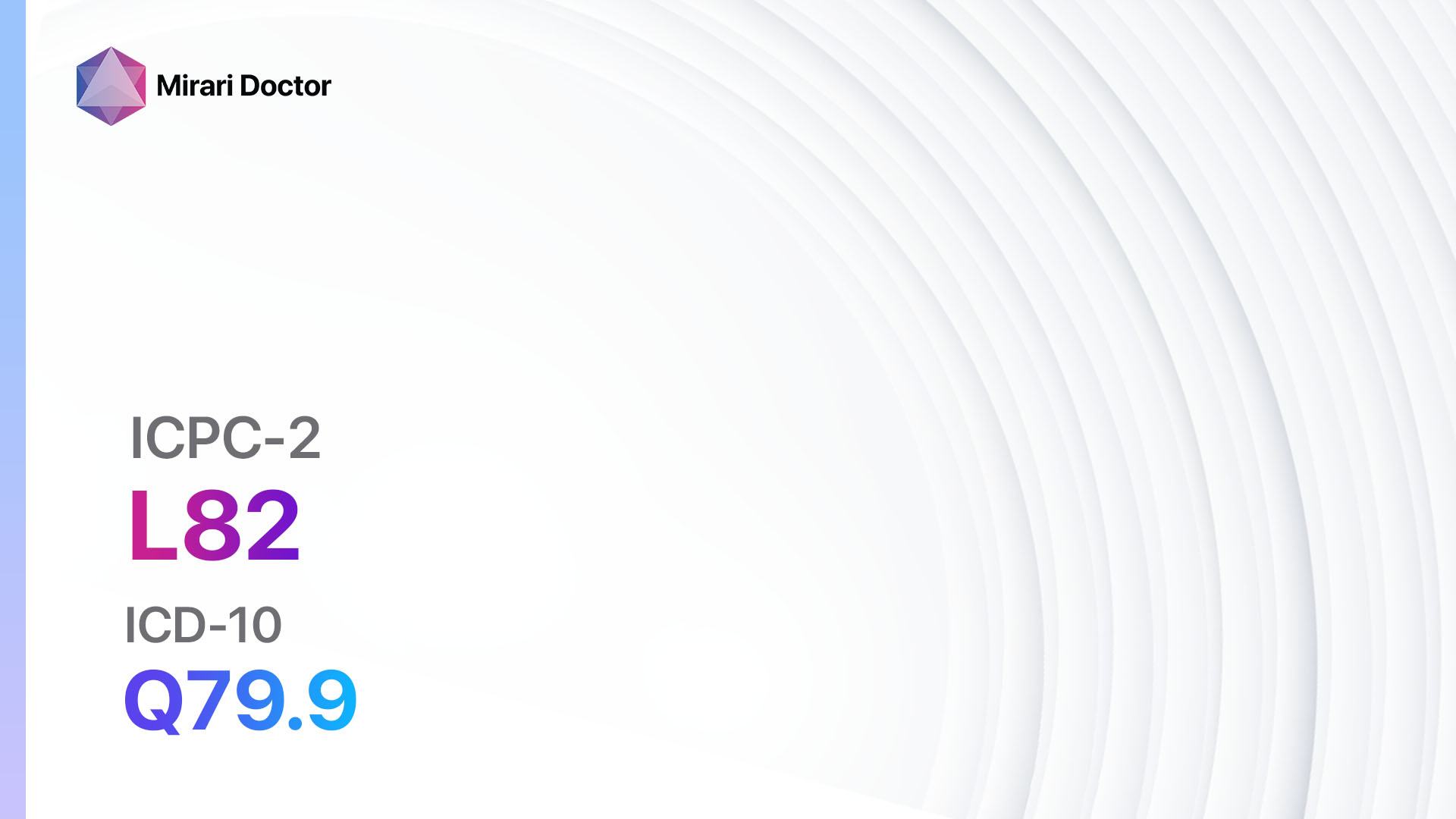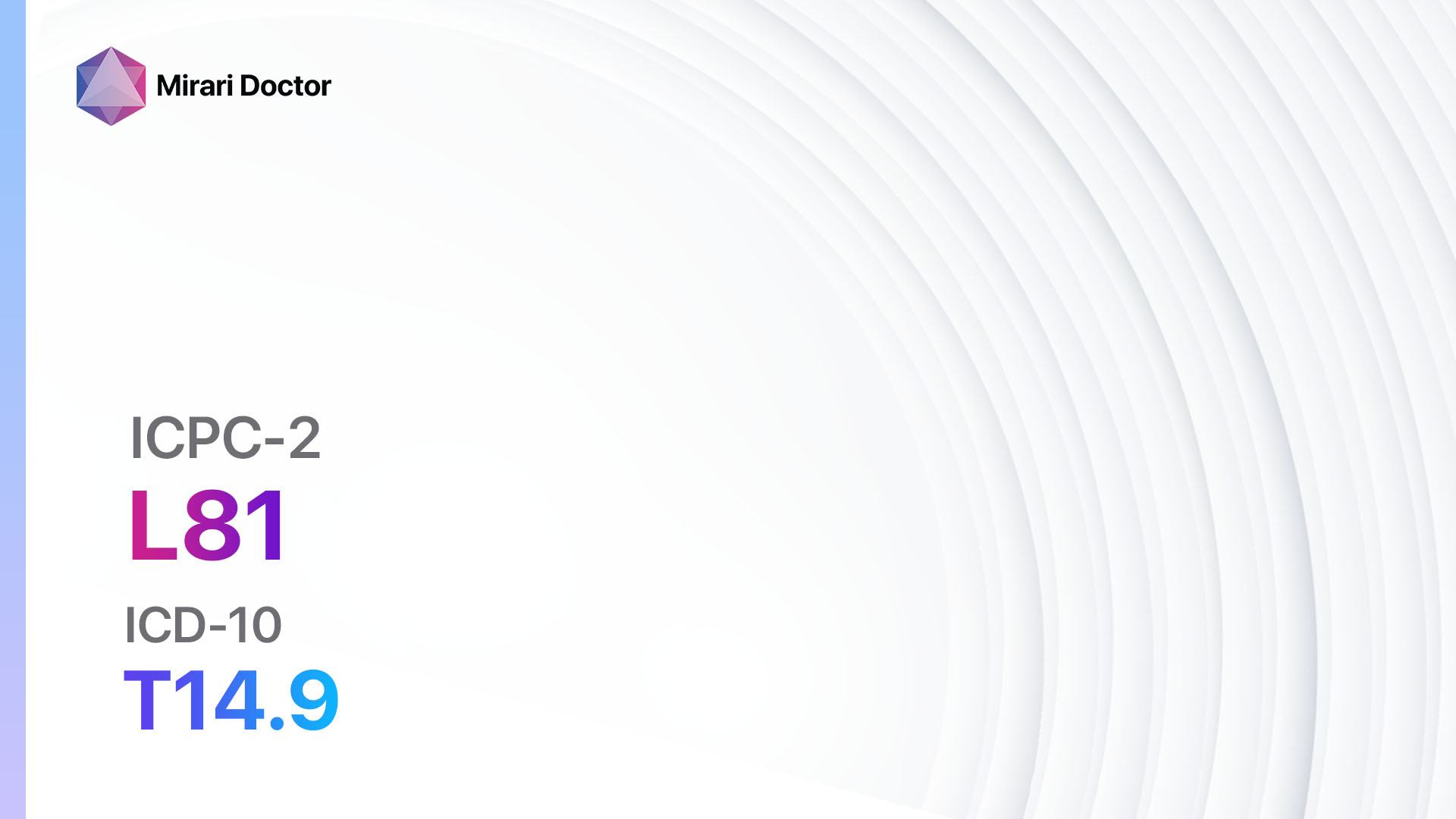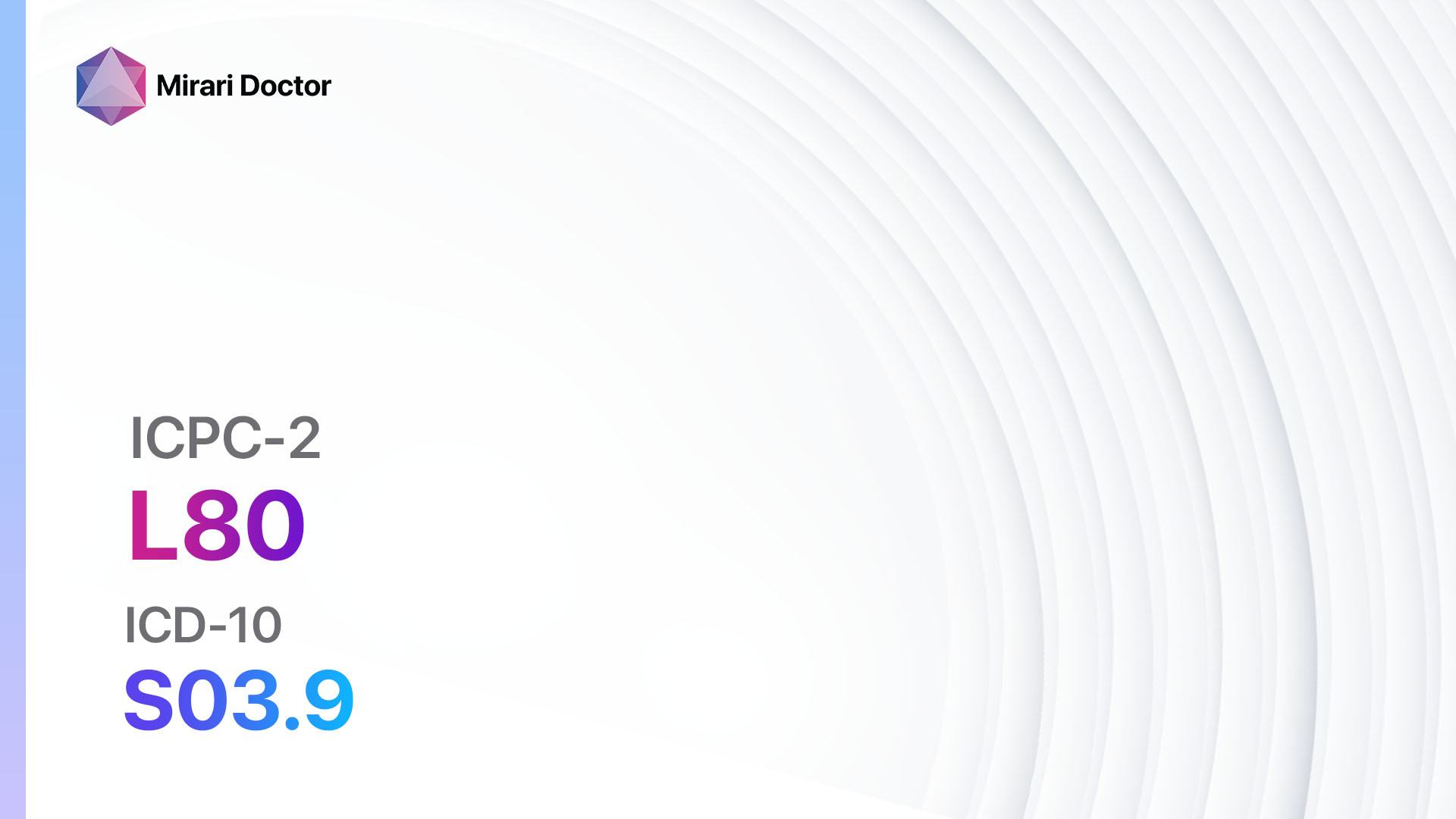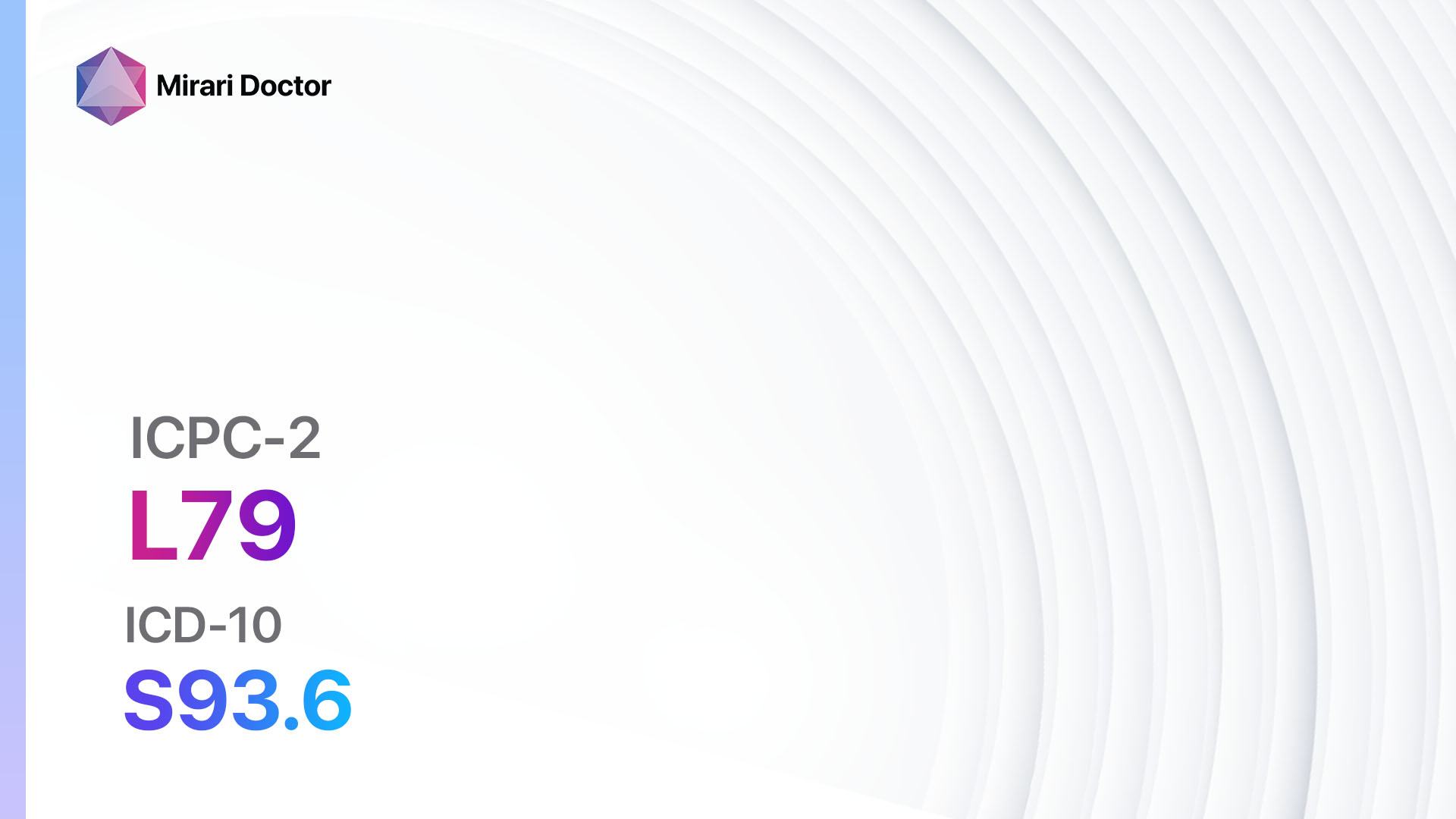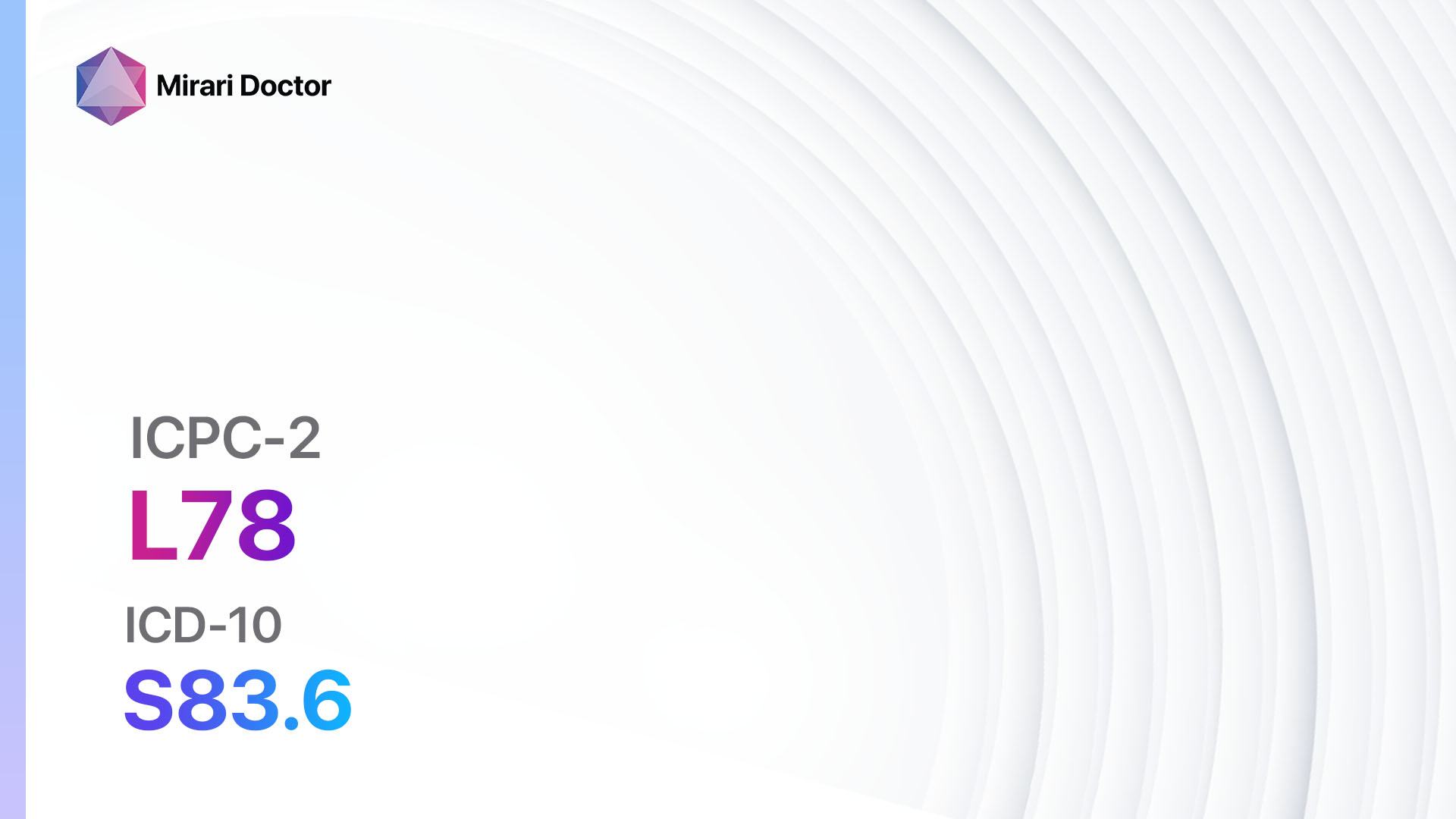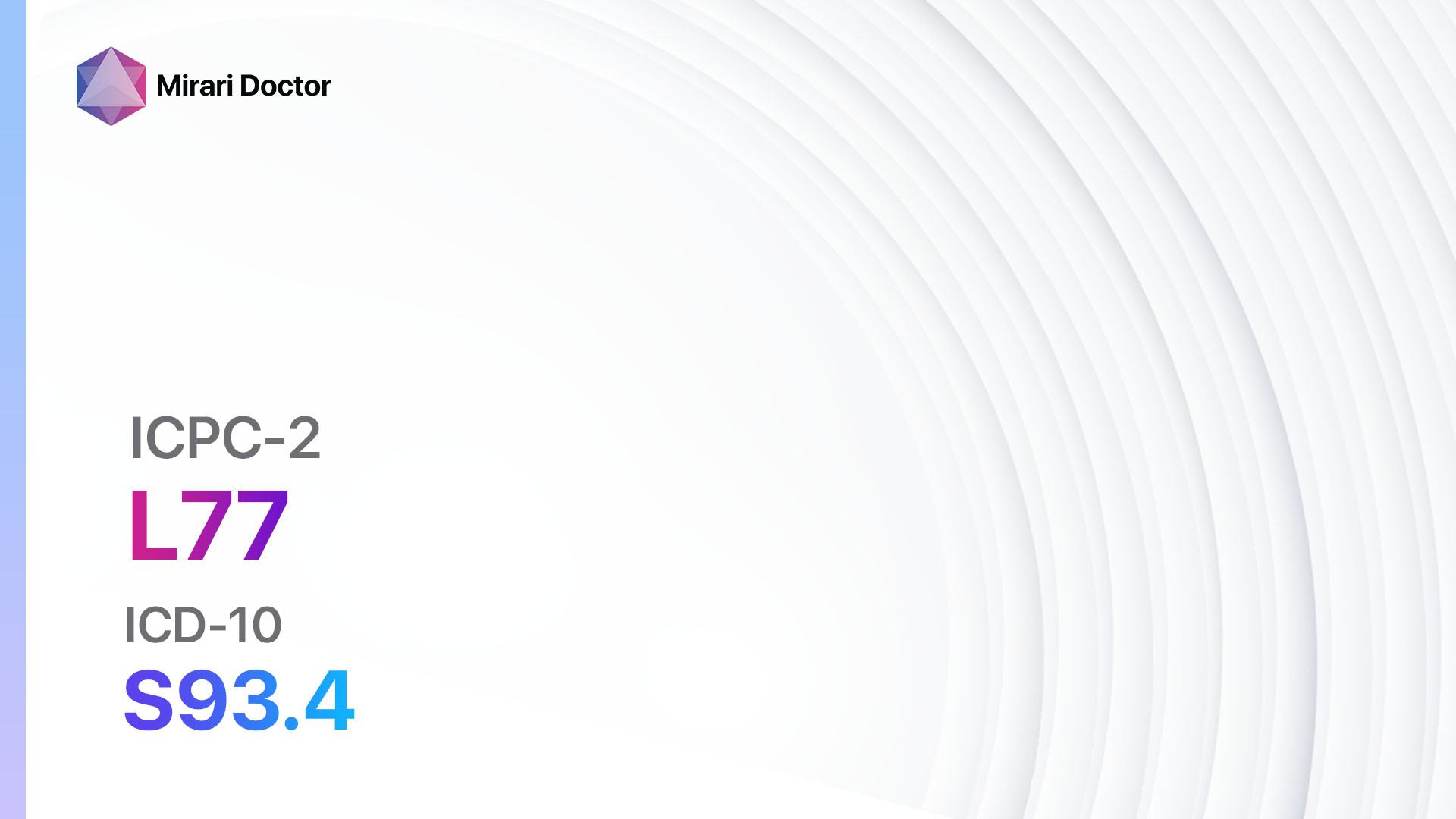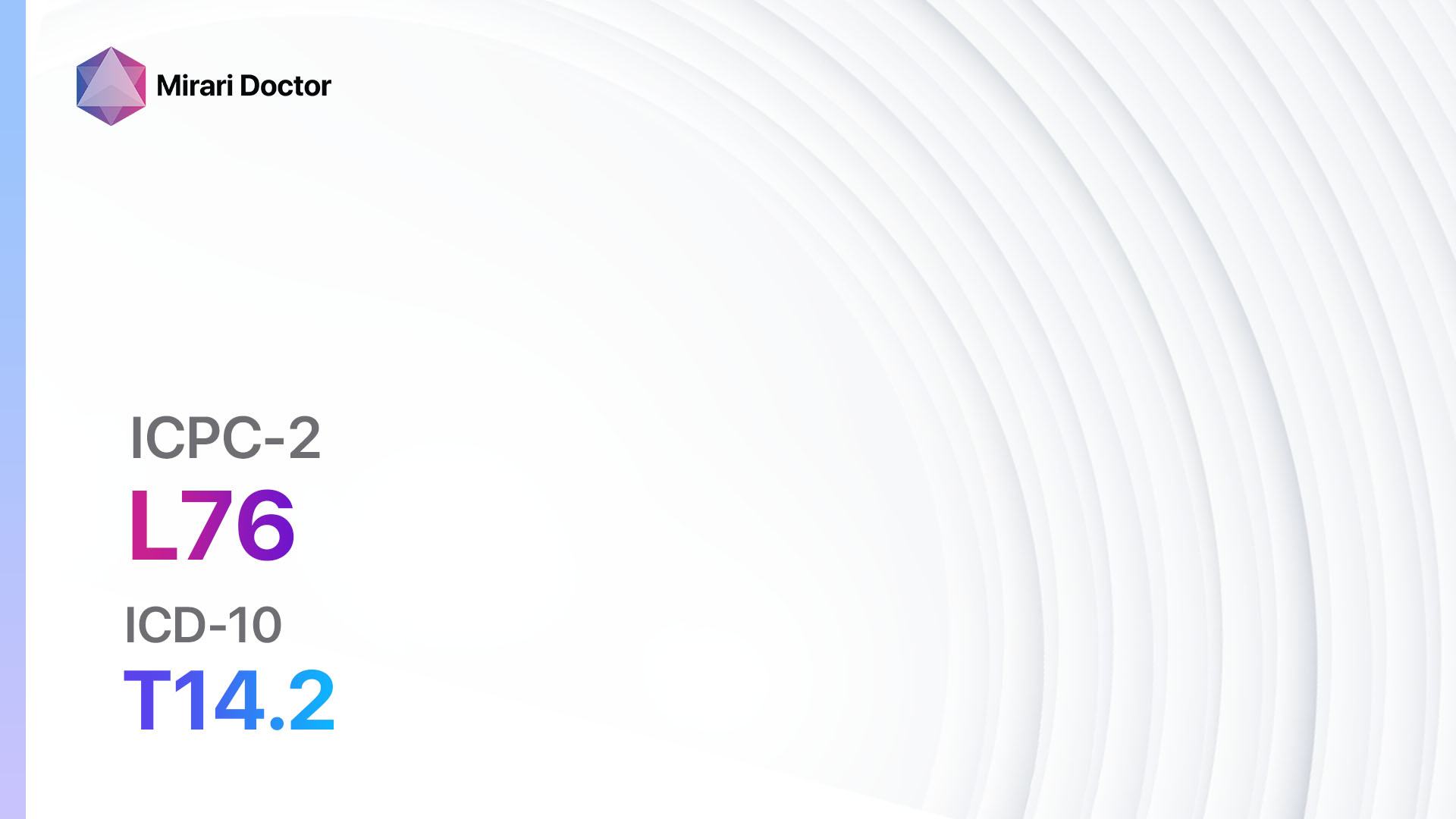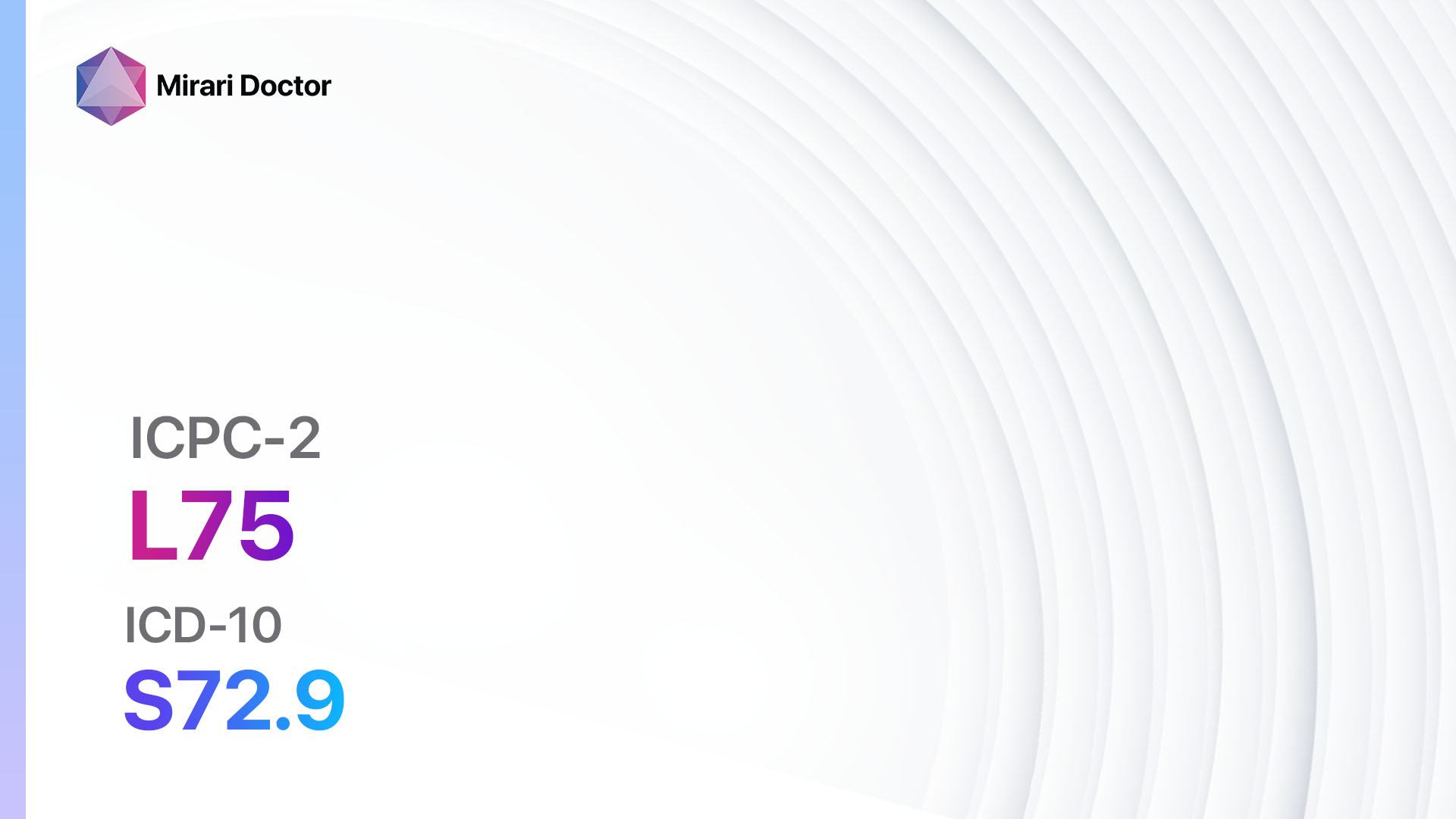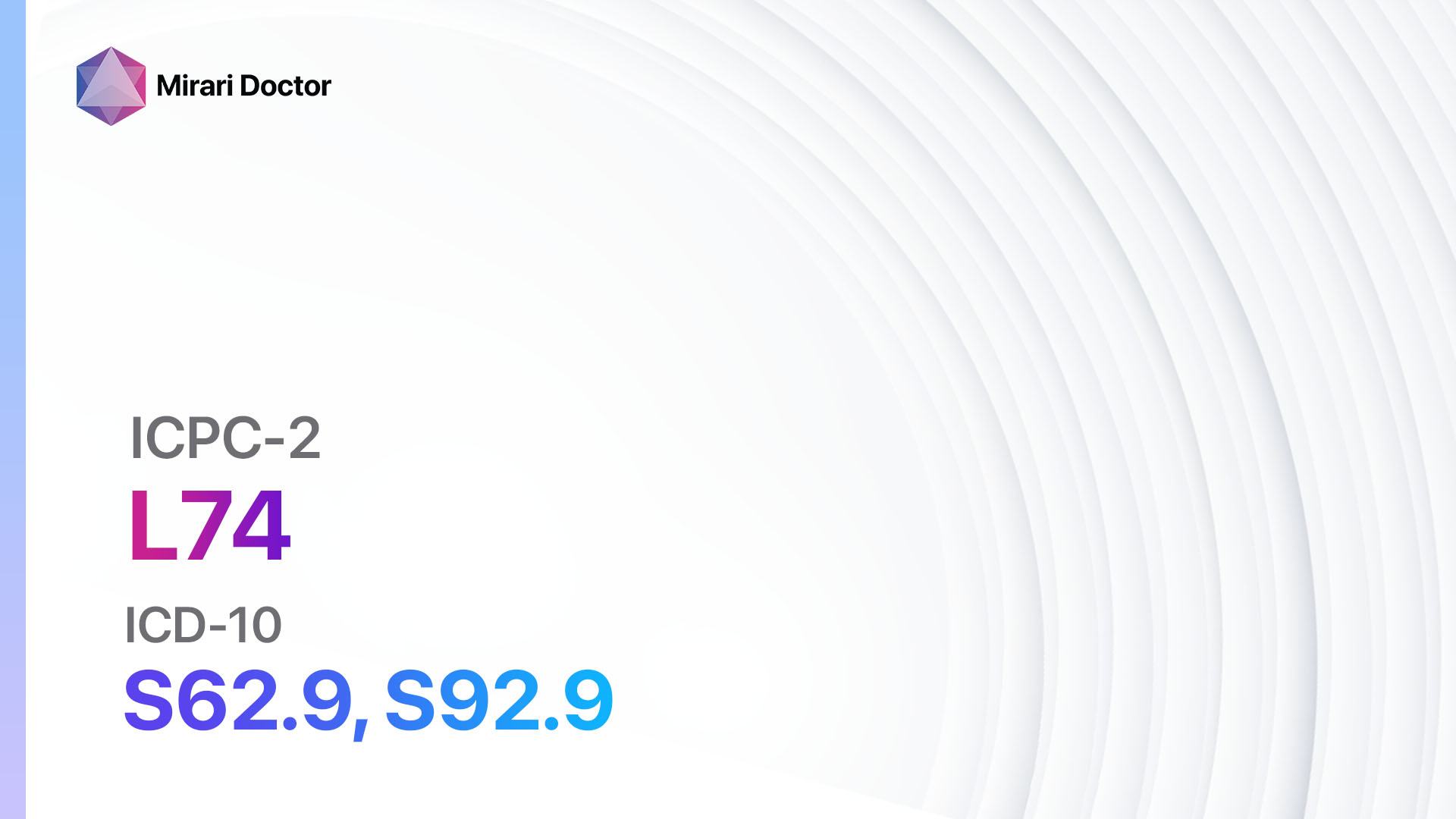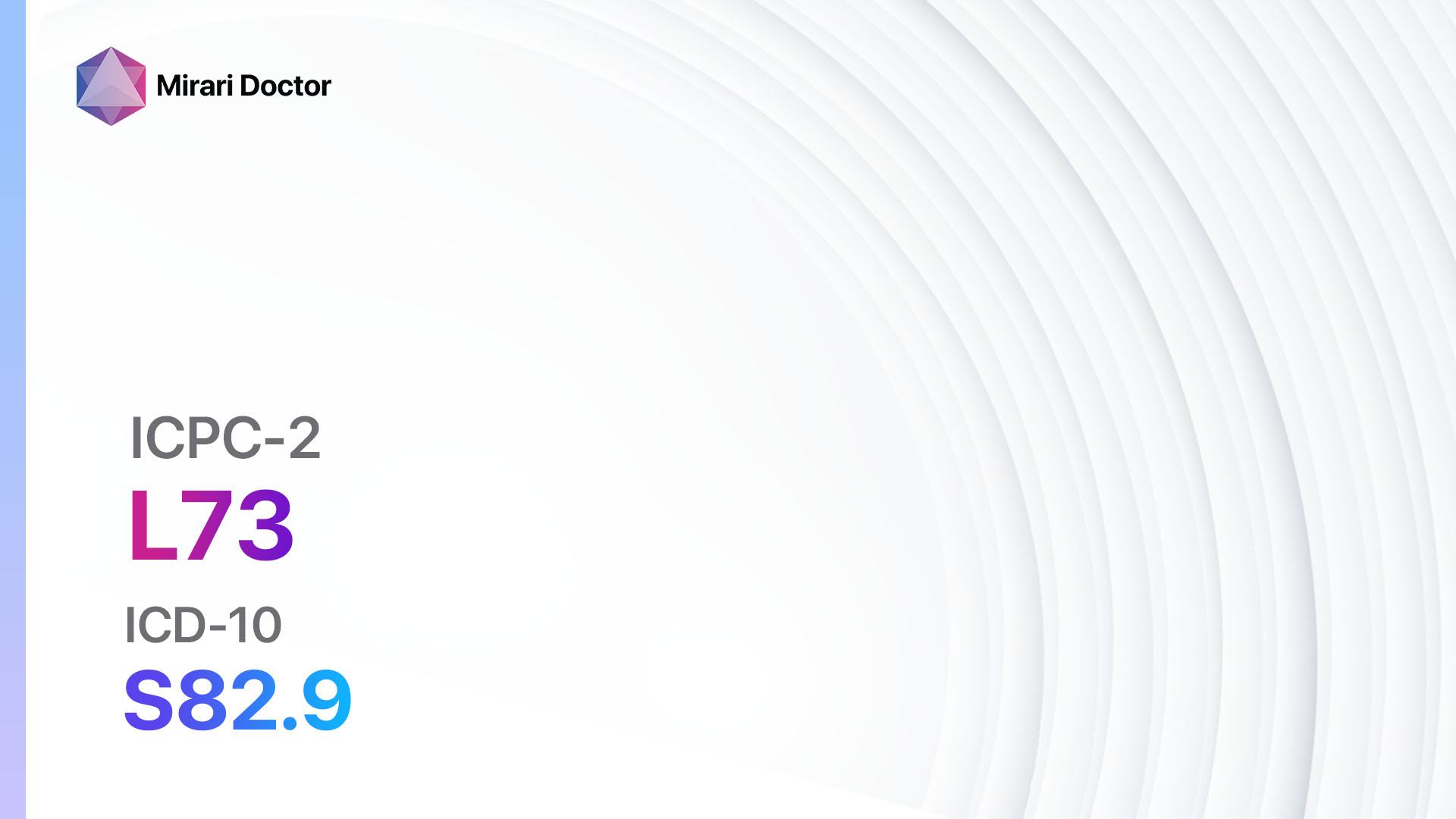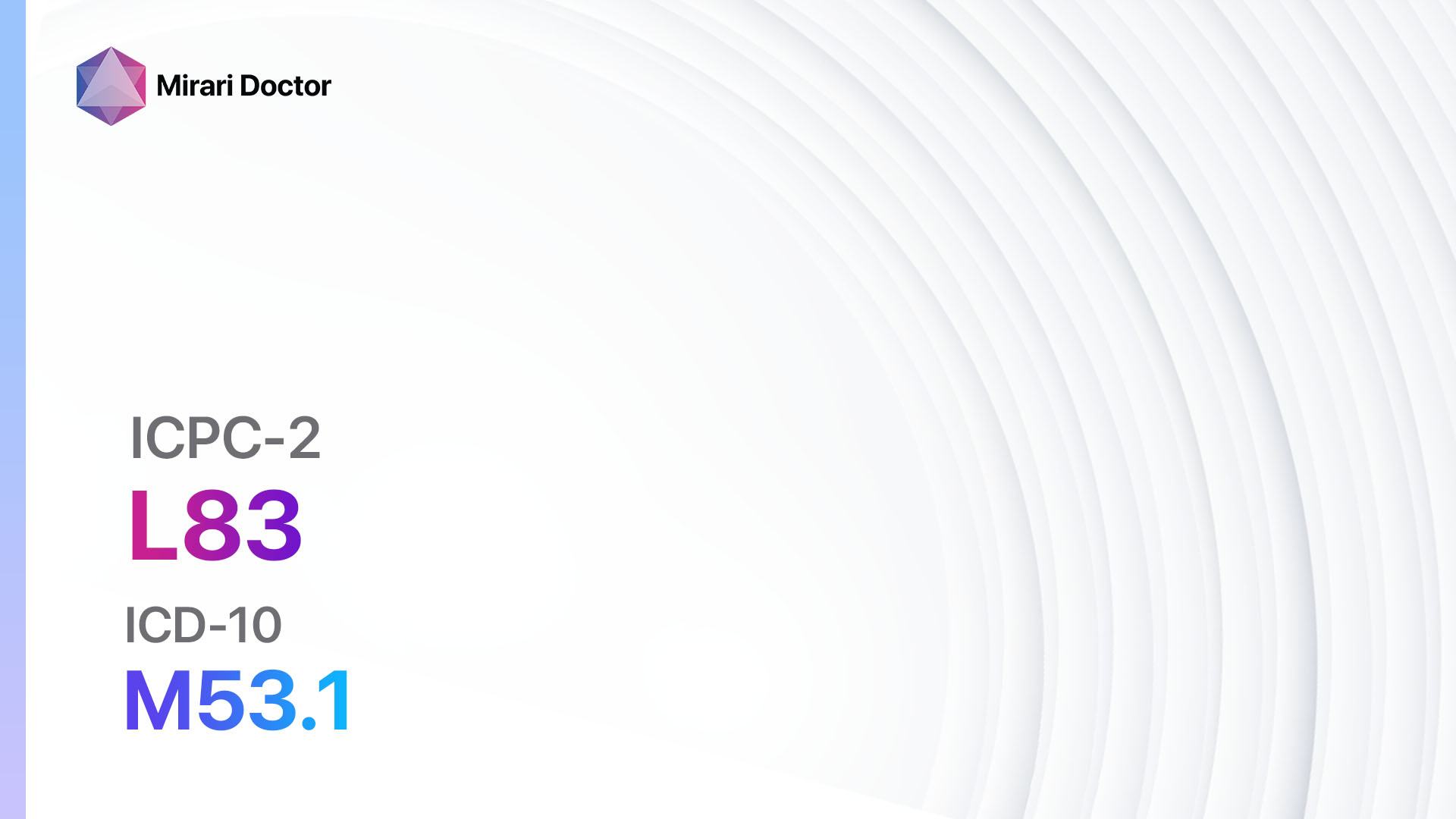
Introduction
Neck syndrome, also known as cervical syndrome, refers to a collection of symptoms and conditions that affect the neck region. It is a common condition that can cause pain, stiffness, and limited range of motion in the neck.[1] This guide aims to provide a comprehensive overview of neck syndrome, including its symptoms, causes, diagnostic steps, possible interventions, and lifestyle interventions.
Codes
Symptoms
- Neck pain: Dull or sharp pain in the neck region.[4]
- Stiffness: Difficulty in moving the neck, especially when trying to turn the head.[5]
- Headaches: Pain that originates from the neck and radiates to the head.[6]
- Muscle weakness: Weakness or fatigue in the neck muscles.[7]
- Numbness or tingling: Sensations of numbness or tingling in the neck, shoulders, or arms.[8]
Causes
- Poor posture: Maintaining an incorrect posture for extended periods can strain the neck muscles and lead to neck syndrome.[9]
- Muscle strain: Overuse or sudden movements of the neck muscles can cause strain and result in neck syndrome.[10]
- Injury: Trauma or accidents that involve the neck can lead to neck syndrome.
- Degenerative conditions: Conditions such as osteoarthritis or degenerative disc disease can contribute to the development of neck syndrome.
- Stress: Emotional or psychological stress can cause muscle tension and contribute to neck syndrome.
Diagnostic Steps
Medical History
- Gather information about the patient’s symptoms, including the duration, severity, and any triggering factors.
- Identify any risk factors, such as previous neck injuries or occupations that involve repetitive neck movements.
- Assess the patient’s medical history, including any underlying conditions or medications that may contribute to neck syndrome.
Physical Examination
- Observe the patient’s posture and range of motion in the neck.
- Palpate the neck muscles to identify areas of tenderness or muscle knots.
- Evaluate muscle strength and reflexes in the neck and upper extremities.
- Perform special tests, such as the Spurling’s test or shoulder abduction test, to assess nerve involvement.
Laboratory Tests
- Blood tests: May be ordered to rule out underlying conditions, such as rheumatoid arthritis or thyroid disorders, that can contribute to neck syndrome.
- Erythrocyte sedimentation rate (ESR) or C-reactive protein (CRP): These tests can help assess for inflammation in the body.
Diagnostic Imaging
- X-rays: Provide a detailed view of the bony structures in the neck and can help identify any abnormalities, such as fractures or degenerative changes.
- Magnetic resonance imaging (MRI): Offers a more detailed visualization of the soft tissues, including the discs, nerves, and muscles in the neck.
- Computed tomography (CT) scan: Useful for evaluating bony abnormalities or identifying nerve compression.
Other Tests
- Electromyography (EMG): Measures the electrical activity of the muscles and nerves in the neck to assess for nerve involvement.
- Nerve conduction studies: Evaluate the speed and strength of electrical signals traveling through the nerves.
Follow-up and Patient Education
- Schedule follow-up appointments to monitor the patient’s progress and adjust treatment plans if necessary.
- Provide education on proper posture, ergonomics, and exercises to improve neck strength and flexibility.
- Discuss strategies for stress management and relaxation techniques to reduce muscle tension in the neck.
Possible Interventions
Traditional Interventions
Medications:
Top 5 drugs for Neck syndrome:
- Nonsteroidal anti-inflammatory drugs (NSAIDs) (e.g., Ibuprofen, Naproxen):
- Cost: Generic versions can be $3-$20/month.
- Contraindications: History of gastrointestinal bleeding, renal impairment, or allergy to NSAIDs.
- Side effects: Upset stomach, heartburn, dizziness.
- Severe side effects: Gastrointestinal bleeding, kidney damage, allergic reactions.
- Drug interactions: Anticoagulants, corticosteroids.
- Warning: Prolonged use can increase the risk of cardiovascular events.
- Muscle relaxants (e.g., Cyclobenzaprine, Methocarbamol):
- Cost: Generic versions can be $10-$30/month.
- Contraindications: Glaucoma, urinary retention, or allergy to muscle relaxants.
- Side effects: Drowsiness, dizziness, dry mouth.
- Severe side effects: Severe allergic reactions, liver toxicity.
- Drug interactions: Sedatives, alcohol.
- Warning: Avoid driving or operating heavy machinery while taking muscle relaxants.
- Tricyclic antidepressants (e.g., Amitriptyline, Nortriptyline):
- Cost: Generic versions can be $10-$30/month.
- Contraindications: Recent myocardial infarction, glaucoma, or allergy to tricyclic antidepressants.
- Side effects: Dry mouth, drowsiness, constipation.
- Severe side effects: Cardiac arrhythmias, serotonin syndrome.
- Drug interactions: Monoamine oxidase inhibitors (MAOIs), selective serotonin reuptake inhibitors (SSRIs).
- Warning: May take several weeks to achieve therapeutic effect.
- Corticosteroids (e.g., Prednisone, Methylprednisolone):
- Cost: Generic versions can be $10-$50/month.
- Contraindications: Active infections, uncontrolled diabetes, or allergy to corticosteroids.
- Side effects: Increased appetite, weight gain, mood changes.
- Severe side effects: Osteoporosis, adrenal suppression, increased risk of infections.
- Drug interactions: Nonsteroidal anti-inflammatory drugs (NSAIDs), anticoagulants.
- Warning: Long-term use should be avoided due to potential adverse effects.
- Topical analgesics (e.g., Lidocaine patches, Capsaicin cream):
- Cost: Lidocaine patches can cost $10-$20 per patch. Capsaicin cream can cost $10-$20 per tube.
- Contraindications: Allergy to local anesthetics or capsaicin.
- Side effects: Skin irritation, burning sensation.
- Severe side effects: Allergic reactions, severe skin irritation.
- Drug interactions: None reported.
- Warning: Avoid applying topical analgesics to broken or irritated skin.
Alternative Drugs:
- Acetaminophen: Over-the-counter pain reliever that can be used as an alternative to NSAIDs.
- Gabapentin: Anticonvulsant medication that may help relieve nerve-related pain.
- Serotonin-norepinephrine reuptake inhibitors (SNRIs): Medications such as Duloxetine or Venlafaxine that can help manage chronic pain.
Surgical Procedures:
- Surgery is typically not the first-line treatment for neck syndrome. However, in severe cases where conservative measures fail, surgical interventions may be considered. The specific procedure will depend on the underlying cause of the neck syndrome and may include:
- Cervical discectomy and fusion: Removal of a herniated disc and fusion of the adjacent vertebrae.
- Cervical laminectomy: Removal of the lamina to relieve pressure on the spinal cord or nerves.
- Artificial disc replacement: Replacement of a damaged disc with an artificial disc.
Alternative Interventions
- Physical therapy: Involves exercises, stretches, and manual therapy techniques to improve neck strength, flexibility, and posture. Cost: $50-$150 per session.
- Chiropractic care: Involves spinal adjustments and manipulations to alleviate pain and improve neck function. Cost: $50-$200 per session.
- Massage therapy: Uses manual techniques to relax muscles, improve circulation, and reduce pain in the neck. Cost: $60-$120 per session.
- Acupuncture: Involves the insertion of thin needles into specific points on the body to promote pain relief and relaxation. Cost: $60-$120 per session.
- Yoga: Incorporates gentle stretching, strengthening, and relaxation techniques to improve neck mobility and reduce pain. Cost: Varies depending on the location and instructor.
Lifestyle Interventions
- Ergonomic modifications: Adjusting workstations, chairs, and computer setups to promote proper posture and reduce strain on the neck. Cost: Varies depending on the modifications required.
- Heat or cold therapy: Applying heat or cold packs to the neck can help reduce pain and inflammation. Cost: $10-$30 for heat or cold packs.
- Stress management techniques: Engaging in activities such as meditation, deep breathing exercises, or yoga to reduce muscle tension and stress. Cost: Varies depending on the chosen technique.
- Regular exercise: Engaging in low-impact exercises, such as swimming or walking, to improve overall fitness and strengthen the neck muscles. Cost: Varies depending on the chosen activity.
- Proper sleep posture: Using a supportive pillow and maintaining a neutral spine position while sleeping to prevent neck strain. Cost: Varies depending on the chosen pillow.
It is important to note that the cost ranges provided are approximate and may vary depending on the location and availability of the interventions. It is recommended to consult with healthcare professionals for personalized treatment options and cost estimates.
Mirari Cold Plasma Alternative Intervention
Understanding Mirari Cold Plasma
- Safe and Non-Invasive Treatment: Mirari Cold Plasma is a safe and non-invasive treatment option for various skin conditions. It does not require incisions, minimizing the risk of scarring, bleeding, or tissue damage.
- Efficient Extraction of Foreign Bodies: Mirari Cold Plasma facilitates the removal of foreign bodies from the skin by degrading and dissociating organic matter, allowing easier access and extraction.
- Pain Reduction and Comfort: Mirari Cold Plasma has a local analgesic effect, providing pain relief during the treatment, making it more comfortable for the patient.
- Reduced Risk of Infection: Mirari Cold Plasma has antimicrobial properties, effectively killing bacteria and reducing the risk of infection.
- Accelerated Healing and Minimal Scarring: Mirari Cold Plasma stimulates wound healing and tissue regeneration, reducing healing time and minimizing the formation of scars.
Mirari Cold Plasma Prescription
Video instructions for using Mirari Cold Plasma Device – L83 Neck syndrome (ICD-10:M53.1)
| Mild | Moderate | Severe |
| Mode setting: 2 (Wound Healing) Location: 0 (Localized) Morning: 15 minutes, Evening: 15 minutes |
Mode setting: 2 (Wound Healing) Location: 0 (Localized) Morning: 30 minutes, Lunch: 30 minutes, Evening: 30 minutes |
Mode setting: 2 (Wound Healing) Location: 0 (Localized) Morning: 30 minutes, Lunch: 30 minutes, Evening: 30 minutes |
| Mode setting: 9 (Arthritis) Location: 0 (Localized) Morning: 15 minutes, Evening: 15 minutes |
Mode setting: 9 (Arthritis) Location: 0 (Localized) Morning: 30 minutes, Lunch: 30 minutes, Evening: 30 minutes |
Mode setting: 9 (Arthritis) Location: 0 (Localized) Morning: 30 minutes, Lunch: 30 minutes, Evening: 30 minutes |
| Total Morning: 30 minutes approx. $5 USD, Evening: 30 minutes approx. $5 USD |
Total Morning: 60 minutes approx. $10 USD, Lunch: 60 minutes approx. $10 USD, Evening: 60 minutes approx. $10 USD, |
Total Morning: 60 minutes approx. $10 USD, Lunch: 60 minutes approx. $10 USD, Evening: 60 minutes approx. $10 USD, |
| Usual treatment for 7-60 days approx. $70 USD – $600 USD | Usual treatment for 6-8 weeks approx. $1,260 USD – $1,680 USD |
Usual treatment for 3-6 months approx. $2,700 USD – $5,400 USD
|
 |
|
Use the Mirari Cold Plasma device to treat Neck syndrome effectively.
WARNING: MIRARI COLD PLASMA IS DESIGNED FOR THE HUMAN BODY WITHOUT ANY ARTIFICIAL OR THIRD PARTY PRODUCTS. USE OF OTHER PRODUCTS IN COMBINATION WITH MIRARI COLD PLASMA MAY CAUSE UNPREDICTABLE EFFECTS, HARM OR INJURY. PLEASE CONSULT A MEDICAL PROFESSIONAL BEFORE COMBINING ANY OTHER PRODUCTS WITH USE OF MIRARI.
Step 1: Cleanse the Skin
- Start by cleaning the affected area of the skin with a gentle cleanser or mild soap and water. Gently pat the area dry with a clean towel.
Step 2: Prepare the Mirari Cold Plasma device
- Ensure that the Mirari Cold Plasma device is fully charged or has fresh batteries as per the manufacturer’s instructions. Make sure the device is clean and in good working condition.
- Switch on the Mirari device using the power button or by following the specific instructions provided with the device.
- Some Mirari devices may have adjustable settings for intensity or treatment duration. Follow the manufacturer’s instructions to select the appropriate settings based on your needs and the recommended guidelines.
Step 3: Apply the Device
- Place the Mirari device in direct contact with the affected area of the skin. Gently glide or hold the device over the skin surface, ensuring even coverage of the area experiencing.
- Slowly move the Mirari device in a circular motion or follow a specific pattern as indicated in the user manual. This helps ensure thorough treatment coverage.
Step 4: Monitor and Assess:
- Keep track of your progress and evaluate the effectiveness of the Mirari device in managing your Neck syndrome. If you have any concerns or notice any adverse reactions, consult with your health care professional.
Note
This guide is for informational purposes only and should not replace the advice of a medical professional. Always consult with your healthcare provider or a qualified medical professional for personal advice, diagnosis, or treatment. Do not solely rely on the information presented here for decisions about your health. Use of this information is at your own risk. The authors of this guide, nor any associated entities or platforms, are not responsible for any potential adverse effects or outcomes based on the content.
Mirari Cold Plasma System Disclaimer
- Purpose: The Mirari Cold Plasma System is a Class 2 medical device designed for use by trained healthcare professionals. It is registered for use in Thailand and Vietnam. It is not intended for use outside of these locations.
- Informational Use: The content and information provided with the device are for educational and informational purposes only. They are not a substitute for professional medical advice or care.
- Variable Outcomes: While the device is approved for specific uses, individual outcomes can differ. We do not assert or guarantee specific medical outcomes.
- Consultation: Prior to utilizing the device or making decisions based on its content, it is essential to consult with a Certified Mirari Tele-Therapist and your medical healthcare provider regarding specific protocols.
- Liability: By using this device, users are acknowledging and accepting all potential risks. Neither the manufacturer nor the distributor will be held accountable for any adverse reactions, injuries, or damages stemming from its use.
- Geographical Availability: This device has received approval for designated purposes by the Thai and Vietnam FDA. As of now, outside of Thailand and Vietnam, the Mirari Cold Plasma System is not available for purchase or use.
References
- Binder, A. I. (2007). Cervical spondylosis and neck pain. BMJ, 334(7592), 527-531.
- ICPC-2. (n.d.). L83 Neck syndrome. Retrieved from https://www.icpc-2.info/en/icpc-2/chapter-l-musculoskeletal/l83-neck-syndrome
- ICD-10. (n.d.). M53.1 Cervicobrachial syndrome. Retrieved from https://icd.who.int/browse10/2019/en#/M53.1
- Fejer, R., Kyvik, K. O., & Hartvigsen, J. (2006). The prevalence of neck pain in the world population: a systematic critical review of the literature. European spine journal, 15(6), 834-848.
- Hoy, D. G., Protani, M., De, R., & Buchbinder, R. (2010). The epidemiology of neck pain. Best practice & research Clinical rheumatology, 24(6), 783-792.
- Bogduk, N. (2011). The anatomy and pathophysiology of neck pain. Physical Medicine and Rehabilitation Clinics, 22(3), 367-382.
- Falla, D. (2004). Unravelling the complexity of muscle impairment in chronic neck pain. Manual therapy, 9(3), 125-133.
- Radhakrishnan, K., Litchy, W. J., O’Fallon, W. M., & Kurland, L. T. (1994). Epidemiology of cervical radiculopathy: a population-based study from Rochester, Minnesota, 1976 through 1990. Brain, 117(2), 325-335.
- Ariëns, G. A., Bongers, P. M., Douwes, M., Miedema, M. C., Hoogendoorn, W. E., van der Wal, G., … & van Mechelen, W. (2001). Are neck flexion, neck rotation, and sitting at work risk factors for neck pain? Results of a prospective cohort study. Occupational and environmental medicine, 58(3), 200-207.
- Panjabi, M. M. (1992). The stabilizing system of the spine. Part I. Function, dysfunction, adaptation, and enhancement. Journal of spinal disorders, 5, 383-383.
Related articles
Made in USA


